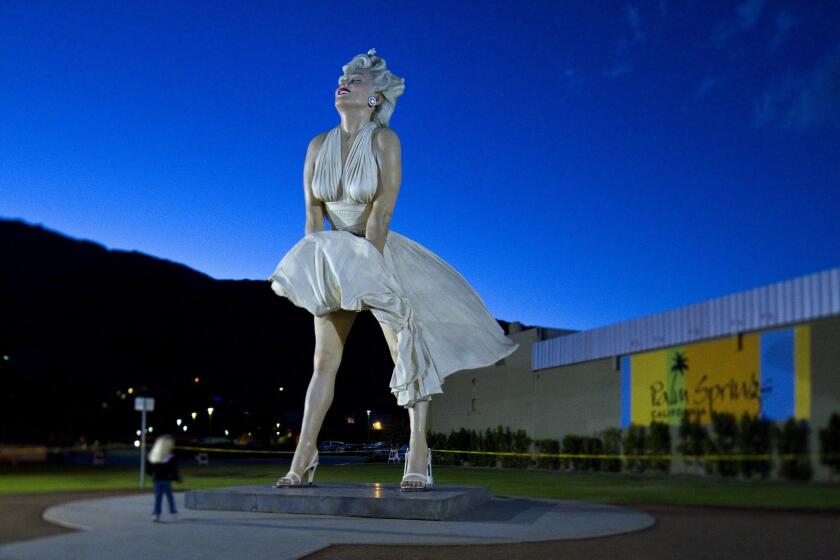Lucas Museum in L.A. acquires Judith F. Baca’s ‘Great Wall’ archive
The Lucas Museum of Narrative Art is expected to announce Wednesday that it has acquired Judith F. Baca’s archive documenting the creation of the city’s most epic mural, “The Great Wall of Los Angeles.”
The half-mile-long artwork, officially titled “The History of California” (1976-84), sits along the Tujunga Wash flood control channel in the San Fernando Valley. It depicts overlooked Indigenous, immigrant and minority histories in California from prehistoric times to the 1950s. Vignettes touch on, among other things, the internment of Japanese Americans and the removal of Mexican Americans from Chavez Ravine, as well as the civil rights movement and the rise of Hollywood. Baca and about 400 teenagers completed the mural over the summers from 1976 to 1983.
The archive features more than 350 objects, including concept drawings, site plans, sketches, notes and correspondence between the artist and community leaders, scholars, historians and other collaborators.
The Lucas Museum’s chief curator, Pilar Tompkins Rivas, called Baca’s mural “a key work in the history of mural making.”
“It does many things at once,” she said in an interview. “It’s monumental in scale. It tells the underrecognized histories of the communities of Southern California throughout time, and with this important emphasis on the 20th century, and many stories that are not often thought about in the development of the history of this region.”
The Social and Public Art Resource Center, or SPARC, the Venice-based organization that Baca cofounded, announced in February that it had received a three-year, $5-million grant from the Andrew W. Mellon Foundation to expand the mural. The expansion will chronicle histories from the 1960s through 2020. The funding also will be used to create better access to the mural from both sides of the Tujunga Wash.
The expansion is being designed now and painting will begin in early 2023, SPARC Executive Director Carlos Rogel said. It will address histories from the points of view of people of color, women and LGBTQ and other minority communities. “Artistically,” Rogel told The Times in February, “they’re a way of memorializing these critically overlooked events.”
The Getty Museum has acquired “Lucretia,” a major 1627 work by Artemisia Gentileschi, the most celebrated female painter of her time.
Making public art accessible and inclusive is key to the thinking at the Lucas Museum, Tompkins Rivas said. When it opens in Exposition Park in 2023, the museum will feature other mural-making documentation and fresco panels related to works by Charles White, Maxfield Parrish, Thomas Hart Benton, Ben Shahn, John Biggers and Dean Cornwell, among others. Baca is the first female muralist represented in the collection.
The acquisition, Baca said in an interview, is “a great gift, for many reasons.”
“It’s now absolutely secure and in good care,” she said. “All the hundreds of drawings that went into the conceptualization of the work, the process of thinking about a giant monument of this scale, will now be visible to the public and preserved — and preserved in Los Angeles. The Lucas Museum is perfect because of its educational focus and its location and emphasis on narrative forms.”
“I hope [the archive] inspires people to look within their own communities,” Tompkins Rivas added. “And feel empowered to tell those stories, to talk about the experiences that they’ve had that can and should be elevated to public platforms.”
Museum Director Sandra Jackson-Dumont and Tompkins Rivas will discuss “The Great Wall of Los Angeles” with Baca from 5 to 6 p.m. April 14 on the museum’s YouTube channel.
A vulgar, misogynistic statue made by a hack artist will mar Palm Springs’ downtown plan. But how does our art critic really feel?
More to Read
The biggest entertainment stories
Get our big stories about Hollywood, film, television, music, arts, culture and more right in your inbox as soon as they publish.
You may occasionally receive promotional content from the Los Angeles Times.












